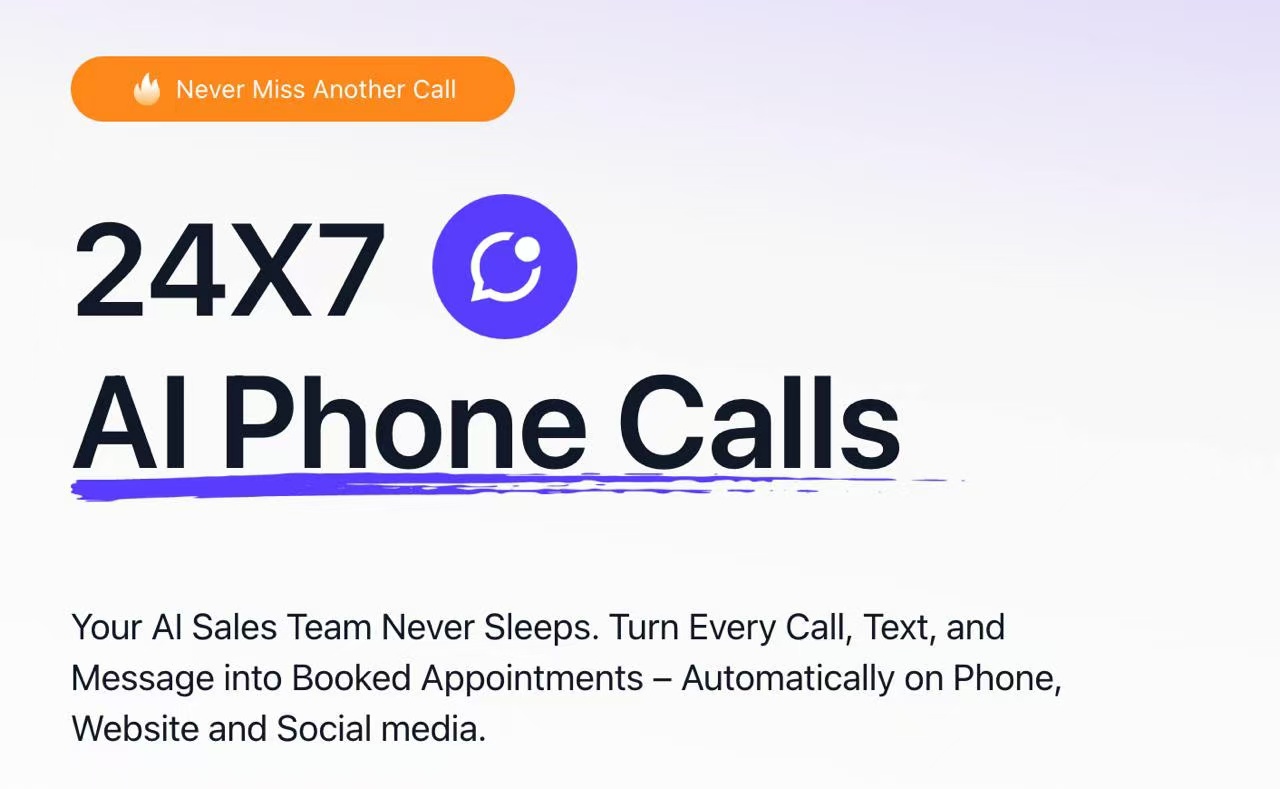How to Set Up ChatGPT 4.5 for Your Website in 2025

Adding ChatGPT 4.5 to my website can revolutionize how I interact with visitors. Whether you're a developer or someone without technical skills, integrating this advanced AI tool is straightforward with two options: the API or the widget. The API allows for complete customization, while the widget provides a quick, no-code way to get started.
Why should I add ChatGPT to my website? ChatGPT 4.5 goes beyond answering questions—it enhances productivity and improves user experiences. For example, customer support teams leveraging GPT-4 have reported a 14% boost in productivity, and business professionals complete 59% more documents per hour. These impressive results demonstrate how ChatGPT can make any website more engaging and efficient.
💡 Tip: If I prefer a hassle-free solution, the widget’s intuitive interface ensures seamless interactions without needing technical expertise.
Key Takeaways
Add ChatGPT 4.5 to your website using a widget or API.
The widget is easy for beginners and has ready-made templates. The API is for developers who want more control.
Change how your chatbot looks and talks to fit your brand. This helps users enjoy it more.
Test your chatbot often to make sure it works well. Fix any problems quickly.
Use analytics to see how users interact with it. Improve your chatbot based on their feedback.
Step-by-Step Guide to Add ChatGPT to My Website
Using the ChatGPT 4.5 Widget
Accessing the Widget Editor
To get started with the AI chatbot widget, you’ll need to access the widget editor. Log in to your OpenAI account and navigate to the widget section. From there, open the editor, which provides a user-friendly interface for setting up your chatbot. This tool is perfect if you’re looking for a quick way to add ChatGPT to your website without diving into code.
Customizing the Chatbot
Once inside the editor, you can customize how the chatbot interacts with your visitors. Start by configuring its initial greeting and common responses. For example, you might set it to welcome users with a friendly “Hi there! How can I help you today?” Next, adjust the chatbot’s appearance to match your website’s branding. You can tweak colors, fonts, and even the layout to ensure it blends seamlessly with your design.
Embedding the Widget into Your Website
After customizing the AI chatbot widget, it’s time to embed ChatGPT into your website. The editor will generate an HTML snippet for you. Copy this code and paste it into your website’s backend, typically within the <body> section of your HTML file. This step ensures the chatbot appears on your site where you want it.
Publishing and Testing the Widget
Finally, publish your changes and test the widget. Visit your website to see how the chatbot looks and functions. Interact with it as a user would to ensure everything works smoothly. If you notice any issues, return to the editor to make adjustments. Testing is crucial to provide a seamless experience for your visitors.
Using the ChatGPT 4.5 API
Signing Up for an OpenAI Account
To integrate ChatGPT using the API, you’ll first need an OpenAI account. If you don’t already have one, head to the OpenAI website and sign up. This account will give you access to the tools and resources needed for API integration.
Obtaining and Securing Your API Key
Once your account is set up, navigate to the API Key section. Follow the prompts to generate a new API key. Make sure to store this key securely, as it’s essential for connecting your website to ChatGPT. Avoid sharing it publicly to prevent unauthorized access.
Writing and Embedding the API Script
Now comes the technical part. Write a script in a programming language like Python or JavaScript to send user messages to the OpenAI API and retrieve responses. For example, in JavaScript, you might use the fetch function to communicate with the API. Once your script is ready, embed it into your website’s frontend to enable the chatbot functionality.
Testing the API Integration
Testing is the final step. Interact with the chatbot on your website to ensure the API integration works as expected. Check for issues like slow response times or incorrect outputs. If needed, refine your script or adjust the API parameters to improve performance.
Comparison of Widget vs. API
When deciding how to add ChatGPT to your website, you’ll need to choose between the AI chatbot widget and the API. Both options have their strengths, but they cater to different needs. Let’s break it down.
Pros and Cons of the Widget
Ease of Use
The ChatGPT widget is perfect if you want a quick and simple solution. You don’t need coding skills to set it up. With just a few clicks, you can integrate ChatGPT into your website. The widget editor provides pre-designed templates, so you can match the chatbot’s look to your site’s design effortlessly. It’s a no-fuss option for beginners or those short on time.
Customization Options
While the widget is easy to use, it does have some limitations. You can adjust the chatbot’s appearance and basic responses, but it doesn’t offer the deep customization that the API does. For example, the widget supports features like real-time web search and file uploads, but it lacks advanced capabilities like function calling or structured outputs.
Best Use Cases
The widget works best for small businesses, personal blogs, or anyone looking for a ready-to-use AI chatbot widget. It’s ideal for providing basic customer support or answering FAQs without needing technical expertise. If you’re wondering how to use ChatGPT quickly and efficiently, the widget is your go-to option.
Tip: If you’re on a budget, the widget offers affordable pricing plans, including free options.
Pros and Cons of the API
Flexibility and Control
The API shines when you need full control over your chatbot’s functionality. It allows you to create custom workflows, integrate ChatGPT with backend systems, and even enable advanced features like vision capabilities or streaming support. This level of flexibility makes it a powerful tool for developers.
Technical Requirements
However, the API isn’t for everyone. You’ll need coding knowledge to write and embed scripts. The setup process can take time, and you’ll need to manage the integration yourself. If you’re not comfortable with programming, the API might feel overwhelming.
Best Use Cases
The API is ideal for larger businesses or developers who want to integrate ChatGPT into complex systems. It’s perfect for creating dynamic, tailored interactions or handling high-traffic websites. If you’re looking to integrate ChatGPT into a custom application or workflow, the API is the better choice.
Widget vs. API: Key Differences
Here’s a quick comparison of their features:
Feature | ChatGPT Widget | API |
|---|---|---|
Real-time Web Search | Yes | No |
File & Image Uploads | Yes | No |
Canvas for Writing & Coding | Yes | No |
Function Calling | No | Yes |
Structured Outputs | No | Yes |
Streaming Support | No | Yes |
Vision Capabilities | No | Yes (image inputs) |
The widget focuses on simplicity and ease of use, while the API offers advanced features and customization. Your choice depends on your website’s needs and your technical skills.
Customization and Optimization Tips for ChatGPT

Tailoring the Chatbot’s Appearance
Adjusting Colors, Fonts, and Layout
Customizing your chatbot’s appearance is a great way to make it feel like a natural part of your website. Start by ensuring the AI chatbot widget is visible and easy to access. Place it in a prominent spot, like the bottom-right corner of your site, so users don’t have to scroll to find it. Adjust the colors, fonts, and layout to match your brand’s aesthetic. For example, if your website uses a minimalist design, keep the chatbot’s interface clean and simple. This consistency helps users feel more connected to your brand.
Adding Your Brand’s Voice
Your chatbot should sound like your brand. Define its tone and language to reflect your company’s personality. Is your brand friendly and casual or professional and formal? Use this as a guide when setting up the chatbot’s responses. You can even create a persona for the chatbot to make interactions more engaging. For instance, a travel website might give its chatbot a cheerful, adventurous tone. Train the chatbot with your brand’s data and refine it regularly to ensure it stays consistent with your messaging.
Optimizing for User Experience
Setting Up Contextual Responses
To optimize for user experience, focus on making the chatbot’s responses relevant and helpful. ChatGPT 4.5 can analyze user input and context to provide personalized answers. For example, if a user asks about product availability, the chatbot can pull real-time data to give an accurate response. This level of contextual understanding enhances user satisfaction and keeps them engaged.
Minimizing Response Times
Nobody likes waiting for answers. To minimize response times, streamline your chatbot’s backend processes. Use efficient coding practices, eliminate unnecessary computations, and leverage asynchronous programming to handle tasks faster. If your website experiences high traffic, consider using cloud services for dynamic scaling. These steps ensure your chatbot responds quickly, even during peak usage.
Using Analytics to Improve Performance
Tracking User Interactions
Analytics can help you understand how users interact with your chatbot. Track metrics like the number of conversations, common questions, and user satisfaction rates. This data reveals what’s working and what needs improvement. For example, if users frequently ask the same question, you can update the chatbot to address it more effectively.
Adjusting Based on Feedback
Feedback is a goldmine for improvement. Use analytics and direct user feedback to refine your chatbot’s performance. If users report incorrect responses, retrain the chatbot to handle those scenarios better. Regular updates based on real-world interactions ensure your chatbot stays relevant and continues to enhance user experience.
💡 Tip: Continuously testing and refining your chatbot keeps it aligned with your brand and user expectations.
Troubleshooting Common Issues with ChatGPT Integration
Even with the advanced capabilities of ChatGPT 4.5, you might encounter a few hiccups during its integration into your website. Let’s tackle some of the most common issues and how to resolve them.
Slow Response Times
Identifying the Cause
If your chatbot feels sluggish, several factors could be at play:
Model Complexity: ChatGPT 4.5 is a powerful model, but its complexity can sometimes lead to longer response times.
Input Length: Longer user inputs require more processing time.
Server Traffic: High traffic during peak hours can slow things down.
Understanding these causes helps you pinpoint the issue and take action.
Solutions to Improve Speed
You can speed up ChatGPT’s responses by optimizing your setup:
Write efficient code to reduce unnecessary computations.
Use asynchronous programming to handle tasks more effectively.
Allocate enough memory and processing power to support the chatbot.
Leverage cloud services for dynamic scaling during high traffic.
Invest in state-of-the-art GPUs to minimize latency.
These steps ensure your chatbot runs smoothly, even during busy periods.
Incorrect Outputs
Training the Chatbot
If ChatGPT provides inaccurate answers, it might need better training. Use high-quality datasets that include current and reliable information. Employ advanced techniques like reinforcement learning and human feedback to refine its responses. Regular updates and fine-tuning will keep your chatbot accurate and aligned with your website’s needs.
Adjusting API Parameters
Fine-tuning API parameters can also improve output accuracy. For example:
Use tokenization to break down text into manageable pieces.
Apply padding and truncation to standardize input lengths.
Organize data into batches for efficient processing.
These adjustments help ChatGPT process information more effectively, reducing errors.
Integration Errors
Common Mistakes
Integration errors often stem from:
Misconfigured API keys or scripts.
Browser extension conflicts.
These mistakes can disrupt the chatbot’s functionality on your website.
How to Fix Them
To resolve integration errors:
Double-check your API key and script setup.
Disable unnecessary browser extensions to identify conflicts.
Keep your operating system and browser updated to avoid compatibility problems.
Testing your integration thoroughly ensures a seamless experience for your users.
💡 Pro Tip: Regularly monitor your chatbot’s performance and address issues promptly to maintain a high-quality user experience.
ChatGPT 4.5 is a game-changer for enhancing your website’s functionality and user experience. Whether you prefer the simplicity of the widget or the flexibility of the API, both options offer unique benefits. With features like 24/7 customer support, instant responses, and personalization, ChatGPT can transform how users interact with your site. Plus, Newoaks AI provides resources like guides and community forums to make integration seamless. Start using ChatGPT 4.5 today to create a dynamic and engaging experience for your visitors.
💡 Pro Tip: Explore Newoaks AI’s Integration Guide for step-by-step support.
FAQ
How much does it cost to integrate ChatGPT 4.5 into my website?
The cost depends on your usage and the method you choose. The widget offers free and affordable plans, while the API charges based on the number of tokens processed. Check OpenAI’s pricing page for the latest details.
Can I use ChatGPT 4.5 on multiple websites?
Yes, you can! Whether you’re using the widget or the API, you can integrate ChatGPT into multiple websites. Just ensure you follow OpenAI’s usage policies and manage your API keys securely for each site.
Do I need coding skills to set up ChatGPT 4.5?
Not necessarily. The widget is a no-code solution, perfect for non-technical users. If you prefer the API, basic programming knowledge is required to write and embed scripts. Choose the option that fits your skill level.
How do I train ChatGPT to match my brand’s tone?
You can customize responses by providing examples of your brand’s tone during setup. For the API, fine-tune the model with your data. For the widget, adjust the chatbot’s greeting and responses to reflect your brand’s personality.
What if my chatbot doesn’t work as expected?
If you encounter issues, start by checking your integration setup. For the API, verify your scripts and API key. For the widget, revisit the editor to adjust settings. OpenAI’s support team and documentation can also help troubleshoot problems.
💡 Tip: Regular testing ensures your chatbot stays functional and user-friendly.
See Also
Your Complete Handbook for Adding ChatGPT Chatbots Online
Ten Effective Ways to Grow Your Service Business Using ChatGPT
A Detailed Process for Building a Tailored ChatGPT Chatbot
A Thorough Guide to Using Intercom API with ChatGPT
Transforming Entertainment Bots with ChatGPT: A Unique Custom Chat Experience

